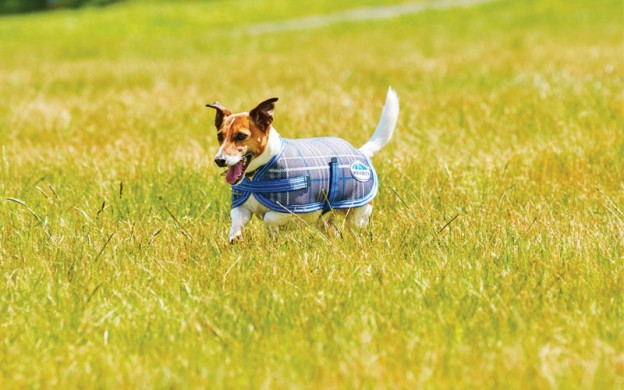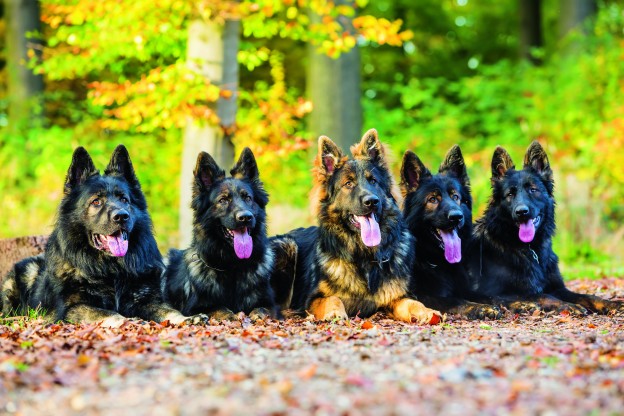
Do you know how to give your dog the best possible care in the chilly winter months? DOGSLife look at and bust seven common winter dog care myths.
If you regularly enjoy an early-morning walk with your dog, you’ll probably be aware that winter is well and truly here. Unless you live in certain tropical areas of Australia, that means plunging temperatures, bitingly cold winds, icy rain and sometimes even snow.
Just like any other season, winter brings with it a host of unique care requirements for our canine friends. Just as heatstroke and providing ample fresh water are important concerns in summer, so too are a number of doggy health issues in winter. But do you know what to do to give your dog the best possible care during the chilly months? Dr Karen Flexner, veterinarian from My Vet Animal Hospital in Waterloo, NSW, explains that dogs have unique care requirements in winter that every owner should be aware of.
“Your dog’s skin gets drier in the winter, just like humans’ does, so be careful with how frequently you bathe him,” she says. “I suggest only doing it when he or she really needs it, no more often than every two weeks at the most. Also be sure to keep them warm and dry them off thoroughly with a hair dryer. They can get really cold when their fur is wet.”
There are also plenty of other myths and misconceptions out there about how to provide the best care for our canines during winter, so let’s take a closer look at what you need to do to look after your furry friend until spring.
Myth 1: My dog’s tough — he doesn’t need a coat
Doggy coats and jackets only exist to part fashionistas and their pampered pooches from their money, right? Wrong.
“Dogs with short fur will benefit from a warm coat when they go outdoors,” Dr Karen says. “There are tons of options out there nowadays, from hoodies to puffy vests to argyle sweaters.”
If you live in an area that uses salt on icy roads and footpaths, your pooch’s little feet can also be hurt or irritated by the salt. Avoid those areas or wash your dog’s feet off after a walk. You can even get booties for dogs to protect their feet in rough conditions.
Myth 2: My dog has thick fur so she can stay outside all winter long
It’s the coldest night of the year and temperatures are set to drop below zero. You wouldn’t consider stepping foot outside yourself without 10 layers of clothing and four beanies, but you’re happy to leave your dog outside in the chill all night long.
However, just because your pet has a thick covering of fur doesn’t mean she won’t feel the cold. “It’s kind of like if you were wearing a thick fur coat in the cold; you are going to feel warmer than you would in a T-shirt, but you still wouldn’t want to stay outside all night like that,” Dr Karen says. She also points out that dogs’ ears, tails, noses and feet aren’t very well protected and they could be at risk of frostbite. Just like humans, frostbite for dogs is intensely painful and, in extreme cases, permanent damage and tissue loss may occur.
Myth 3: My dog needs to eat heaps more to help him cope with the cold
Do you fill your dog’s bowl to the brim during winter because he needs more chow to “protect him from the cold”? While there is some truth to the view that dogs sometimes need to eat more in winter, that’s no reason to start fattening your pooch up.
Dr Karen says your dog may need to eat a little bit extra if he’s still getting the same amount of exercise that he does in warmer weather, but the difference is pretty small. “The best thing to do is stick with his normal diet and see your vet if your dog seems to be losing or gaining weight, or displays ‘heat-seeking’ behaviour. This can include wanting to sleep near the oven or the clothes dryer, or even just on your bed — sleeping on or close to the floor can get pretty chilly,” she says.
Myth 4: My dog doesn’t need to drink as much water in winter
This one is completely untrue. An ample supply of fresh, clean water is just as important for your dog in winter as it is during the warmer months of summer. Make sure your dog always has access to more than one source of clean water, especially if his dish is kept somewhere it could potentially freeze over. Fountains are really useful to stop water from freezing but the best solution is to simply move the dish (and probably your dog) to a warmer place.
Myth 5: I don’t need to worry about parasite prevention in winter
Yes, you do. While many parasites pose a greater risk in the warmer months, that doesn’t mean you can let your pet’s parasite prevention slide over winter and pick it up again when spring arrives.
“Definitely stay on your same parasite protocol all year round as recommended by your veterinarian. There’s a smaller chance that they will pick up parasites such as fleas and ticks in the winter; however, it doesn’t mean that they won’t,” Dr Karen says, “Ticks and heartworms especially are life-threatening and it’s not worth letting your little friend be vulnerable
to them. Always speak to your veterinarian if you are unsure about which parasite program is best suited to your fur-baby.”







